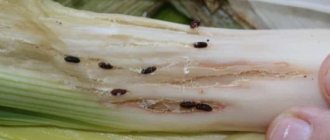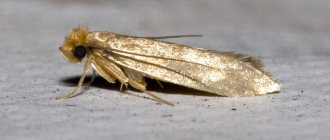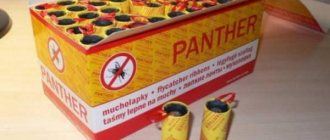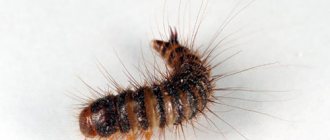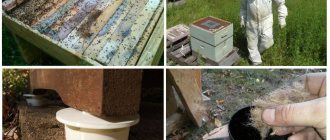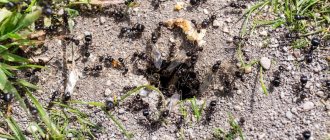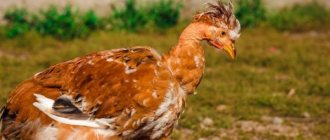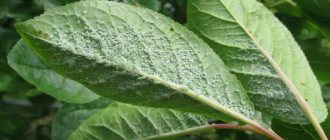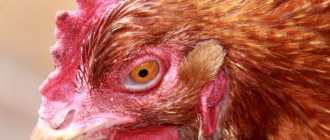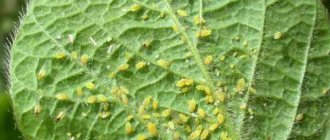The cabbage fly is an insect pest. Its larvae damage the root system of cruciferous plants, which leads to rapid wilting of cabbage. It is problematic to remove this fly, so gardeners advise taking certain preventive measures that will help avoid its appearance. But such actions do not always give a 100% guarantee, as a result of which you need to know the signs of a plant being damaged by this insect and methods of its destruction.
Appearance of cabbage fly
There are 2 types of pests that differ only in size - spring and summer flies.
Main characteristics of the appearance of an adult pest:
- coloring is ash-gray, and in males it is slightly darker;
- length - 6 mm (spring), 7.5 mm (summer) and 5.5 mm (males);
- the abdomen has an elongated ovoid shape with a pointed apex;
- a wide black stripe runs along it. At the base it widens, and towards the posterior edge of the segments it narrows;
- there are 3 dark longitudinal stripes on the back;
- in males there is a narrow transverse dark stripe on each segment, and in females there are wedge-shaped spots of brown color;
- The width of the eyes of females is equal to the width of the forehead, and in males it is 4-5 r. more;
- In females there is 1 hair at the base of the hind thighs, while in males there are many more.
Insect larvae have a thick yellow or white body measuring 8 mm.
It is narrowed in front and ends in an oblique cut at the back. Two symmetrical black hooks are visible through the transparent cover of the head end. Important!
Damage to cruciferous crops is caused by the larvae, and not the adults, of cabbage flies, since they are the ones who feed on the green roots of cabbage, damaging their integrity.
Who are these annoying dipterans?
Biological description
A fly is a flying insect with a body length from 2 mm to 2 cm. The body of a fly consists of 3 parts: head, thorax and abdomen.
The insect flies with the help of a pair of membranous wings, and moves along the surface (horizontal, vertical and ceiling) with 3 pairs of legs. This is possible due to the fact that each leg consists of 5 segments, the lower of which (the foot) has 2 claws and a sticky pad.
On the head of the fly there is a proboscis, through which the insect sucks in liquid food, two short olfactory antennae and two large eyes with several thousand hexagonal facets. She has all-round vision, she sees everything that happens not only from the front and sides, but also from behind, and with her antennae she recognizes odors at a great distance.
White, black and miners
There are now such a huge number of varieties of flies (more than 40,000 species) that scientists find it difficult to classify them
But for an ordinary person, it doesn’t matter what species or class a given insect belongs to, but what matters is what it eats and how dangerous it is. Therefore, dipterans are divided into:
- aphagi - adults, do not feed on anything;
- hematophagous - prefer to feed on blood;
- coprophages - in natural conditions they accelerate the process of decay of excrement;
- necrophages - eat dead organic matter;
- nectarophages - the name speaks for itself - plant nectar is eaten;
- polyphagous - they eat everything.
The gardener has his own priorities - he must know which flies are harmful to vegetables and which are beneficial:
- The enemies of cabbage are 2 types of flies - spring cabbage fly and summer cabbage fly.
- There are also miners - small insects that lay eggs under the skin of leaves, inside which the larvae then gnaw out passages. However, this variety is polyphagous, appears in late spring - early summer, and prefers cucumbers, salads and tomatoes, so it does not pose a particular danger to cabbage.
- There is also a useful fly - the hoverfly, which feeds on aphids and sometimes small caterpillars.
Habitat
Vegetable pests specialize in certain vegetables. Cabbage flies often live, reproduce and overwinter in cabbage beds; True, they do not disdain other cruciferous vegetables. These insects can also lay eggs on wild and weedy cruciferous plants.
Appearance
In appearance, cabbage flies are very similar to house flies.
And spring and summer differ in color and size:
- Spring males are dark gray in color with black stripes on the back and reach a size of 5-5.5 mm. Females are light gray in color, slightly larger - 6-6.5 mm. The wings of this variety are transparent with dark gray streaks.
- Individuals of the summer variety reach a length of 7 to 8 mm and have a yellow-gray body and transparent, yellowish wings with yellow veins.
How does it reproduce?
- The flight of spring dipterans begins at the end of April, and after 2-3 days they mate. After 1-2 weeks, the female lays 100-150 white cigar-shaped eggs measuring 1-1.2 mm on the root collar of the seedling or in the soil next to the cabbage. The full cycle from egg to adult insect takes 40-60 days, and depending on the region, regenerations can range from 1 to 3.
- Summer (large) cabbage flies mate 7-10 days after emergence. The female also lays from 100 to 150 eggs, but only one generation develops per year. From the eggs, after 5-10 days, depending on the humidity and temperature of the soil, white legless larvae 8 mm long appear.
Danger to cruciferous vegetables
Cabbage flies (spring and summer) are equally harmful to all subspecies and varieties of cabbage, as well as to:
- rutabaga;
- radish;
- radishes;
- turnips
This is due to the fact that it is not the flies themselves that attack the crops, but their larvae, which eat the roots and root crops of the plants. Therefore, it is not so easy to detect them.
At what time of year do plants usually suffer?
Important!
Early cabbage varieties are attacked by the first generation of spring cabbage fly larvae in early May. The second generation, depending on weather conditions, can attack as early as late June - early July.
Summer cabbage fly larvae attack mid-season and late-season cabbage varieties:
- in the southern regions - in mid-June;
- in the middle zone - at the end of June;
- in the northern regions of Russia - in mid-July.
Reasons for appearance
From late April to mid-May, female spring flies begin to lay eggs (each individual about 150 pieces) on or near the root collar of cabbage in the surface layer of soil. The peak of this process is considered to be the time of lilac flowering. The soil temperature should be 9-10 degrees. After 7-10 days, larvae emerge from them. They feed on the green roots of the plant and destroy the core of the stems.
Summer flies appear towards the end of the first summer month, when the air temperature exceeds 18 degrees, so their larvae pose a threat to the harvest of late cabbage.
The factors that contribute to the occurrence of the pest in household plots are unknown, so gardeners recommend periodically inspecting the planted crop for the presence of cabbage fly eggs. This will help to take timely measures to destroy them and save, if not the entire harvest, then most of it.
When the larvae appear, it will be much more difficult to save the cabbage. They quickly begin to absorb its roots and the plant completely withers in 3-4 weeks.
Biological drugs
This is due to the fact that insects are able to adapt to many substances, and treatment using the same poison may not be effective.
Fitoverm
A drug based on aversectin.
Refers to:
- insecticidal, fighting insects;
- acaricidal, eliminate ticks;
- as well as nematicidal agents that eliminate roundworms.
The drug is of biological origin. This remedy will get rid of emerging cabbage moths by destroying the caterpillars. Fitoverm is packaged in containers of different sizes.
Lepidocide
An insecticide of biological origin used against cabbage moths that appear on plants.
The toxin in the drug causes paralysis of the insect's gastrointestinal tract for several hours. After 24 hours, the pest dies.
Recommended for use at the initial stages of caterpillar development. Repeated treatment is carried out after 5–6 days, but no later than a week before harvest.
The drug is slightly toxic and does not accumulate in plants and soil.
Sumi alpha
Pyrethroid drug, toxic to pests of cruciferous crops. Plants are treated 1–2 times before heads and root crops begin to set. The dosage of the drug is 5 g per 10 liters of water.
Fury
Broad-spectrum insecticide. To destroy cabbage moths, the consumption rate of the drug is 1 ml per 10 liters of water.
To avoid addiction, it is recommended to alternate chemical insecticides. At the initial stage of infection, biological drugs are effective. They act on the intestinal system of pests, destroying them in 1–3 days. All biological agents are used in the morning or evening in dry, windless weather at an air temperature of 18–30°C.
Dimilin
An insecticidal agent based on diflubenzuron, like Lepidocid, has an intestinal effect on the pest organism.
Dimilin destroys the protective shell of the larva, stops the development of the insect and provokes its death.
It is recommended to treat cabbage with the preparation during the period when larvae appear on it. The maximum result is achieved 10 days after using the poison.
Bitoxibacillin
A biological insecticide that contains entomopathogenic bacteria.
The fight against cabbage moths is carried out through the paralytic effect exerted by the active substance of the drug on the intestines of the insect.
Bitoxibacillin is available in powder form in packages from 30 mg to 20 kg. A positive result from using the drug is noticeable a day after its use.
Maximum effectiveness is observed after 10 days.
Signs of appearance
If you notice that cabbage flies are starting to fly over your seedlings, then they are either preparing to lay eggs, or have already done this and you need to take action to eliminate them. Summer residents do not always notice this moment and the hatched larvae begin to gnaw through the roots of the plant, which will be indicated by the following signs:
- the cabbage looks wilted. Some believe that this indicates insufficient soil moisture;
- after excessive watering there is no change. The plant continues to wither because its vessels are damaged and moisture does not flow through them;
- bluish-lead leaves.
If any sign of damage to a garden crop by cabbage fly is detected, action to combat it must not be postponed, otherwise the harvest will be lost.
Conclusion
To destroy cabbage whites, you need to combine different means. Much depends on the degree of damage to the plantings, the number of weeds, and the weather. The sooner measures are taken, the greater the chances of preserving the harvest and preventing the appearance of pests next year.
- How to get rid of cabbage butterflies: what it looks like, what it prefers, an overview of mechanical, chemical and folk methods of control, their pros and cons
- How to deal with the pea codling moth: a description of the pest, why it is dangerous, an overview of the main methods of combating it - agricultural technology, folk recipes, biological methods, chemicals, their pros and cons
- How to protect cabbage from caterpillars: types of pests, causes of occurrence, how to detect them, prevention, review of control methods - mechanical, biological, chemical, folk, their pros and cons
- How to deal with carrot fly: description of the pest, signs of infection, what crops it affects, review of chemicals and traditional methods, prevention tips
Effective folk remedies
To solve this problem, various chemicals are produced (Zemlin, Karbafos, Lepidotsid, Actellik), but in their absence or to increase efficiency, it is recommended to use folk methods:
- wash the seedlings in weak potassium permanganate before planting;
- plant plants that emit odorous elements (garlic, sage, celery, cumin, marigolds) in the spaces between the cabbage or along the perimeter of the garden bed;
- spray the flaccid plant heads with an aqueous solution of ammonia (5 ml per 10 liters of water) or burdock infusion (2.5 kg of leaves are placed in 9 liters of warm water and left for 48 hours);
- sprinkle the cabbage with a small amount of a mixture made from ground hot pepper and mustard powder;
- in mid-May, dust the soil with naphthalene mixed with sand in equal proportions, at a distance of 5 cm from the seedlings. When eggs are detected, 6 g of this mixture is added under each stem, 1 r. in 8 days. This destruction measure is carried out 3 times;
- bury wood ash in the ground near the cabbage or apply dry ash to the plant itself. The procedure is repeated 1 day. at 5 days;
- around the root collar the soil is covered with camphor, slaked lime or wood ash mixed with shag;
- remove old soil and add new soil, taken from another place, to the stem;
- Dust wet cabbage leaves with the dusty mixture. To prepare it, mix shag and wood ash in equal parts. The procedure is carried out when morning dew appears or in the evening;
- spray the seedlings with a solution of valerian (40 ml per 3 liters of water) with the addition of grated laundry soap (2 tablespoons). Soap shavings must be stirred until dissolved;
- For spraying the crop, an aqueous solution of 70% vinegar essence or 9% vinegar (0.5 cups per bucket of water) is suitable.
It is also recommended to install a barrier using a translucent mesh (Lutrasil, Agril). It is pulled over the beds, tightly attached to the ground so that there are no gaps. When it rains, the net is allowed to be removed, since insects do not fly. Watering is carried out without removing such a barrier.
Important! You can install special lids made of plastic or cardboard under the cabbage. They make a cutout for the stem. These devices will prevent flies from laying eggs near the root collar.
Insecticides and traditional methods solve the problem, but they must be used before planting the cabbage in the ground and periodically as it grows. If you miss the moment of appearance of the larvae and their further transformation into pupae, then growing the crop will be problematic due to the birth of new generations of cabbage flies.
Preventive measures and unconventional methods of control
It is easier to prevent the appearance of this pest in the garden than to subsequently fight it.
Traditionally, 4 main protective measures are used:
- Prevention.
- Repellent.
- Screens.
- Treatment with chemicals.
Preventive measures consist of:
- Thorough cleaning of remaining leaves, stems, etc. from the garden area.
- Protection against weeds: carrying out methods for growing cabbage.
- Removing cabbage that has gone into the arrow.
- Compliance with planting rules so as not to infect the seedling material with larvae.
- Carrying out crop rotation.
- Eliminating stumps outside the garden after pruning the forks will significantly reduce the risk of the formation of a spring insect species for the next season.
- Regular plowing of the garden where cruciferous plants grew - this will “kill” the main part of the larvae that have degenerated into pupa.
Insects can really be frightened off by unconventional methods - substances with a strong aroma:
- Loosen the area and dust the plant crop with dry mustard and ground hot pepper.
- Treat the soil around the rhizomes of cabbage seedlings with tobacco dust with ash, naphthalene, slaked lime, and camphor alcohol.
- After the 15th day of the month of May, at an interval of 50 mm from the plants, treat the soil with naphthalene substance.
- Planting celery, dandelion, garlic, and other plants with a pungent odor that repel insects next to cruciferous crops.
- The number of larvae is reduced by ash embedded in the soil. The cabbage seedlings themselves can also be dusted with a dry ash substance - this must be done every 5 days.
Before planting, wash the root system of vegetable seedlings purchased on the market with a weak solution of manganese, and then dip it in diluted mullein mixed with loam.
A mesh is pulled over the garden with cruciferous vegetables as a barrier, which will not allow the pest to pass through. This is carried out from the period when the bird cherry color begins until the end of the lilac color.
Use coarse mulch - for example, paper sheets from a shredder, wood sawdust.
Place lid blocks under the seedling material. They can be plastic or cardboard, but they must be thick.
Effective drugs against cabbage fly
Chemical preparations give good results in the fight against annoying and dangerous flies.
The most effective substances are:
- Actellik. Used in proportions of 20 ml per bucket of water. 1 liter of the composition will be required to treat 10 square meters of land.
- Bankol. Biological preparation from marine annelids. Used in the same way as Actellik BI-58, Decis, Karate (instructions). The substances are used for processing cruciferous crops in large production areas.
- Karbofos, Iskra, Antio, Decis-extra, Rovikurt. These are potent substances and are applicable only in cases of severe insect infestation. Karbofos is used at 50 percent: 600 gr. per hectare. To protect the lit from egg laying, use 60 grams. on a bucket of water. Should be processed 2 times a week.
- Bitoxibacillin, Lepidocid, Dipel. These substances are used in case of severe damage to seedlings.
- Zemlin, Pochin, Grom, Bazudin. Substances with contact and intestinal effects. They are added to the soil on the plot (5 grams per square) before planting the vegetable to a depth of 2 cm. To get the best effect, you need to mix the chemical with dry sand. The larvae will be destroyed within a day.
In addition to the above mentioned products, the chemicals Fitoverm, Biorin, Aktara, Zeta, Kinmiks and others give good results in the fight against insects.
The cabbage fly can ruin the harvest, but by following the rules of planting, caring for the vegetable, taking preventive measures and in the event of infection, insect control methods, you will be able to collect a large number of juicy, tasty heads of cabbage.
The methods of prevention and control are quite simple, even a non-professional in gardening can cope.
Note!
You can learn even more about cabbage pests from this section
vote
Article Rating
Prevention
To avoid damage to garden crops by such insect pests, preventive measures have been developed:
- follow the rules of crop rotation (cabbage should not constantly grow in the same beds);
- remove plants that have arrows;
- take measures to prevent the emergence of wild cruciferous plants that are weeds (sverbiga, rapeseed);
- cleaning the area from cabbage tops and leaves, as well as their subsequent disposal outside the garden;
- ensure that pest larvae are not introduced into the soil along with the seedlings;
- periodically carry out deep plowing of the beds in which cabbage grew. This will allow you to destroy the maximum number of pupated larvae;
- remove the surface layer of soil (10 cm), replacing it with fresh soil taken from another territory;
- treat the roots of the seedlings before planting with weak potassium permanganate;
- plant calendula, parsley, celery, coriander and other plants that produce odorous elements that repel flies between the cabbage or along the perimeter of the bed.
These simple steps will help prevent the appearance of cabbage fly larvae, which will protect your crop from damage.
Chemical methods of control
Common methods of controlling cabbage fly using pesticides are considered the most commonly used option. It is an effective and quickly solving method for the summer resident. By contacting a specialized store, you can choose a huge number of means of exterminating this insect. By reviewing the arsenal of drugs and using insecticides, you can stop this insect using the following poisons:
- Topaz is often used as a foliar spray against flies at the rate of one ampoule per bucket of water. This insecticide destroys cabbage fly larvae and the fly itself.
- Karbofos is used in a 50% solution. Mix 20 grams of powder with 10 liters of water and treat the cabbage with the prepared solution. The repeated procedure should be repeated at intervals of 5 days with a weaker solution. This drug destroys the fly outright and prevents its reoccurrence. You can use it as a preventive measure followed by spraying.
- With the help of modern Actellik, a broad-spectrum drug, it is used at the rate of 5 ml per 10 liters of water. It is a good tool in the fight against harmful insects. When using, please note that it has a specific odor and spraying with protective agents is recommended.
Additional methods
Almost any chemical remedy for midges on cabbage has a quick and lasting effect, but pesticides must be used with caution so as not to harm your own health
First of all, you need to pay attention to the part of the instructions that indicates the minimum harvest time after treatment with the selected drug. If there are fewer days left before the cabbage is ripe than required to neutralize the activity of the drug, its use should be abandoned.
The following will help you quickly remove fleas from cabbage:
- Actellik. Organophosphate preparation of contact-intestinal action, available in emulsion and powder. It will destroy the pest 20 minutes after application to the sprouts, and protects the beds from the appearance of new pests for a period of 7 to 14 days.
- Spark. Insecticide in the form of tablets for preparing an aqueous solution (1 tablet per 10 liters of water). You need to spray cabbage leaves with a freshly prepared solution.
- Initiative. A soil-based insecticide based on diazinon is effective against all pests, especially against black flea beetles, cabbage flies and other insects whose larvae overwinter and develop in the soil. The drug is applied to the soil (superficially) before planting cabbage seedlings in open ground. Pests die when trying to get closer to the sprouts.
- Decis Pro. This preparation is based on insecticides of the pyrethroid group, kills midges within an hour from the moment of treatment, is resistant to being washed off with water during rain and watering, and provides plants with protection for up to 15 days after a single treatment.
- Bankol. The drug has a wide spectrum and is effective against all pests of cabbage and other garden crops. Low toxicity to soil, plants and animals. It will help quickly get rid of pests and protect the sprouts for another 3 weeks after a single treatment.
- Angio. Systemic insecticide based on 2 components. Destroys pests almost instantly, affects both adult insects and larvae and eggs. Penetrates into the soil and destroys soil pests. It prevents insects from developing resistance to the active substances and protects the plantings for several weeks after treatment.
- Lightning. A fast-acting drug, effective against insects at all stages of development. The downside is relatively high toxicity. But the effect is almost lightning fast, the consumption rate is low, and the protective effect after treatment lasts for at least 3 weeks.
When working with toxic chemicals, it is necessary to observe personal safety measures: protect the skin, eyes and respiratory organs. While processing the beds, protective glasses, a gauze bandage over the mouth and rubber gloves are required.
Adviсe
To detect pest eggs, it is recommended to dig up the soil at the root collar using a fork. If you notice small white spots, they need to be carefully removed from the stem before the larvae appear.
According to the advice of gardeners who are faced with this problem, you should not constantly plant cabbage in the same bed. This will increase the risk of cabbage fly. It is also not recommended to plant radishes near them, as the pest is very fond of this plant. Before planting seedlings, first carry out deep plowing and be sure to update the top layer of soil.
The larvae cause great damage to cruciferous plants, so the main rule in the fight against cabbage fly is to take preventive measures. This will not only protect the harvest, but also reduce the risk of insect infestations in subsequent years. If you missed the right moment and the pest began to spoil your cabbage, then try to quickly destroy it.
Planting cabbage and caring for it
Planting and caring for cabbage is carried out as follows:
- Growing cabbage seedlings. Cabbage is a light-loving plant; it requires a large amount of moisture and a temperature of 21°C. The optimal time for planting seeds is the end of April, and cabbage is planted in open ground at the beginning of June. For planting seedlings, prepare a special soil mixture, which consists of half the amount of manure and half of garden soil. You can add coarse sand and pine needles to such a soil mixture; it will be very useful to add 25 grams of fertilizers, such as Foscamide or Nitrophoska, to a bucket of such soil. The thickness of the soil for planting should be at least 12 cm. The distance between the rows of seedlings is about 12 cm, in the row between plants - about 1 cm. Two weeks after germination, the seedlings are thinned out so that about 5 cm remains between the seedlings. Or strong seedlings are selected and plant them in separate pots with a diameter of 7 cm.
- The seedlings are ready for planting when they have 6 true leaves. The average planting pattern is 60x60, that is, approximately three sprouts per 1 square meter. Plant seedlings in open ground in the evening or in cloudy weather. The soil around the sprout is pressed down and watered well, the soil between the rows is thoroughly loosened. Water the seedlings as needed, the general recommendations are as follows: before heading, 3 liters per square meter, and after - five liters per square meter. After a couple of weeks, instead of the missing or infected sprouts, stepping back 10 cm from the old hole, new ones are planted.
- If cabbage grows poorly, it should be fed with mineral fertilizer or a solution of fermented mullein, which is diluted with water in a ratio of 1:6, and one tablespoon of “Foscamide” or “Nitrophoska” is diluted in 10 liters of water. Water each plant, using half a liter of solution on it. If the soil is very dry, then add the same amount of plain water after fertilizing. After this, the cabbage hills up; this is important in care, as it leads to the formation of adventitious roots. The first time they hill up three weeks after planting with moist soil, and the second time – a month after that. Throughout the season, up to five loosenings are carried out and weeding three times before watering or precipitation.
Cabbage pests: aphids
Aphids are a fairly common and serious problem. The insect loves to suck out the sap of the plant, depriving it of nutrition. As a result, the heads of cabbage look ugly and lose their presentation and nutritional value. When attacked by aphids, the vegetable grower will notice damaged and twisted foliage that has unnaturally changed its color, as shown in the photo.
Plants are at risk from larvae and adult insects. Females come in two types. These can be white, wingless insects or winged, brown in color. They migrate from bed to bed without any problems, lay eggs and infect new, succulent plants.
According to experienced farmers, when aphids attack, the harvest becomes poorer than expected. The reason is that the insect depletes the plant's strength, it cannot develop properly and form a large head. Therefore, even if aphids are not detected during regular inspection, it is worth taking time for prevention. For this purpose, the following activities are carried out:
- In autumn, all plant debris is collected for destruction.
- It is worth eradicating all wild cruciferous crops from the site.
- Spraying plantings with garlic infusion repels aphids.
In the photo there is a cabbage fly and its larvae
However, timely prevention does not provide 100% protection. farmers tend to regularly inspect cabbage for aphids. If individuals are detected, you need to begin an active fight for the harvest. Leaves can be wiped with a soft cloth soaked in soapy water. However, for large plantations it is impossible to perform this simple procedure. In this case, spraying is the only right solution. The drugs “Iskra”, “Decis” or “Karbofos” have proven their effectiveness.
The cruciferous flea beetle is another uninvited guest in cabbage beds. Insects are so voracious that in just a few days they can destroy a farmer’s many days of work. Effective measures to combat cruciferous flea beetles will help destroy them quite quickly.
Common Pests
These pests cause damage not only in cabbage beds.
All types of garden plants are seriously damaged by aphids. These small insects inhabit young stems and leaves, sucking sap from plants. Aphids secrete sugary substances that attract ants. In turn, the ants spread aphids to healthy plants, promoting the growth of pest colonies. Honeydew not only attracts ants; sooty fungus quickly multiplies in sticky areas, aggravating the already deplorable condition of seedlings or adult plants.
Pest control measures include spraying plants with special insecticides against aphids. Fighting ants in cabbage beds using the drugs Muracid, Anteater, Thunder-2. Regular mustard powder, which is thickly sprinkled on the entrances to anthills and ant paths, will help repel ants from aphid-infested plants.
It is worth remembering that autumn cleaning of the garden will protect against the occurrence of outbreaks of pests and infectious diseases, so vegetable tops must be burned or placed in compost heaps.
Whitefly
A small white insect, the whitefly, causes enormous damage to cabbage crops. This microscopic pest densely colonizes the lower surface of the leaves of cabbage seedlings, depriving the plant of the opportunity to develop normally. A huge colony of whiteflies takes off into the air at the slightest touch to the leaves.
Pest control measures come down to spraying cabbage with Beatlin, Fosbecid, Fitoverm, Cypermethrin, Talstar, Arrivo, Fury. If the pest has settled in the greenhouse, you can turn on several fumigators at night, and also hang yellow adhesive tape in the room - pests prefer yellow, fly towards it and stick to the adhesive surface.
Chemical agents for the destruction of mole crickets: Grizzly, Thunder, Medvetox. Ultrasonic mole cricket repellers - sititek - have become very popular. It is worth installing several such devices on the site so that the mole cricket will leave the protected area.
Root nematode
Nematodes are microscopic worms that gnaw out passages in the stems and stems of cultivated plants. Nematodes feed on the pulp and sap of the host plant, releasing toxic substances. On the roots of infected plants, round swellings are observed, similar to beads strung on a thread.
There is no treatment for the pest, infected plants are destroyed, the soil in the beds should be replaced (a layer of at least 0.5 meters is removed).
Development
Imago. The emergence of flies is observed at the end of April - May when the soil at the depth of the puparia is warmed up to 12°C. This coincides with the timing of planting cabbage seedlings in the ground. After emerging, the fly feeds on wild flowering vegetation. Maximum flight is observed on warm sunny days from 11 to 15 hours.[2]
The mating period occurs 2–3 days after departure. After 8–15 days, females begin laying eggs. The optimal temperature for this process is considered to be an average daily air temperature of 10–12°C over a ten-day period. The female lays 100–150 eggs in small groups on plants near the root collar, in cracks in the soil near the plants.
They prefer clumpy or coarse soil and well-developed plants. Flies avoid mulched or sprayed soil. Females fly for a long time over the surface of the soil between plants, examining cracks and lumps near them, then, using an ovipositor, push 2-3 eggs into a selected secluded place.[2]
The main sucking pests of cabbage
Aphid
The main sucking pests include aphids, which settle on the underside of young leaves of a curling head of cabbage. In spring, aphids move from surrounding weeds, mostly cruciferous plants growing nearby, to young cabbage plants. The aphids are most numerous in June - the time when live larvae are hatched by female settlers - and in August, when female worms appear. They lay overwintering eggs. During these periods, treatments against aphids are mandatory.
Cabbage aphid (Brevicoryne brassicae). Samuel Batista Cabbage aphid (Brevicoryne brassicae). Edithvale-Australia Cabbage aphid (Brevicoryne brassicae). Scot Nelson
Thrips
Not the pest that is tall, but the one that is insatiable. This is what people say about thrips. Unnoticeable to the naked eye, the adults suck out the sap, leaving copious black spots of excrement on the mutilated leaves. The primary signs of plant damage are whitening of cabbage leaf blades. Later the leaves turn brown and dry out and fall off. Thrips damage about 400 plant species, being especially active during dry periods. In areas that are constantly moist, they practically do no harm. Under natural conditions, thrips can overwinter in all stages of development and with the onset of warm, dry weather they begin active movement and colonization of plants. For more effective destruction of the pest, simultaneous treatment of dry areas of soil and plants is necessary. The contaminated soil is treated from early spring to late autumn after 2-3 weeks.
Thrips in different stages of development. Vijay Anand Ismavel Adult thrips. Steve & Alison1Signs of thrips damage to cabbage. Jules
Cruciferous bugs
Large insects of bright color in the form of red, yellow, white spots, dashes, stripes on a black background. They mainly damage leaves by sucking plant juices. The leaves change their natural color, become yellow with marbled spots, and fade. The formation of the head of cabbage stops, it becomes ugly and soft. Young plants die. The greatest harm in the development cycle of the pest is caused by the larvae emerging from the eggs. They are a wingless form, so they are attached to the plant and, feeding on it, destroy the entire plant. They leave for the winter in mid-August. During the summer, they can be collected manually, which significantly reduces their numbers and harmfulness.
Cabbage bug (Eurydema ventralis) and signs of damage to cabbage leaves. Miguel Angel Jimenez
When does it come out of winter, and what harm does it cause?
The cabbage fly belongs to the Flowerfly family.
The family received this name due to the fact that an adult insect (spring cabbage fly) begins to fly out of the winter during the flowering period of birch, bird cherry, cherry, lilac, and dandelion, when the soil at a depth of 8 centimeters warms up to approximately +10°C (third decade of April - second ten days of May). It feeds on the nectar of which, waiting for the moment of planting seedlings in the ground. In summer, the individual produces a second generation. They are called summer cabbage flies. Their mass flight begins in the second ten days of June, after the first generation of larvae have passed through the pupation stage. This happens at positive temperatures not lower than + 18 ° C. Under very favorable conditions, an individual can produce a third generation. But the first two remain the most dangerous, while the plants are still young and their roots are tender.
An adult insect (imago) does not differ much in appearance from an ordinary fly. Perhaps in size: somewhat smaller (up to 5.5 - 7.5 mm in length).
One adult cabbage plant can lay up to 150 eggs. Moreover, the egg-laying period is long: as long as it lasts for years (6–8 weeks), she is able to lay eggs. From which, 7–10 days after laying, white legless larvae emerge, up to 5–6 mm in size, with a black head. So they are the harmful stage of the cabbage fly, eating the roots of the crop up and down, leading to its death.
The larvae feed until pupation for 20–30 days. They are quite difficult to detect. Even after tearing out a plant, it is difficult to immediately notice them. Externally, infected plants, although they look wilted, due to damage to the root hairs and tissues that supply the entire plant with moisture and nutrients, there is a more characteristic sign that it is the cabbage fly that is doing the damage. Gradually drooping plants acquire a grayish-lilac (cyanotic) tint. This is a signal to take drastic measures. The plant is very young, the root system is still weak to allow a badly damaged plant to survive for a long time or to find the strength to recover and continue growing. On average, a plant infected with larvae withers for 2–3 weeks, then complete death.
The weather can interfere with the timing of the larvae emerging from the eggs, which may or may not be favorable for the fly. Thus, a late, long spring with cold nights leads to a delay in planting cabbage seedlings, which makes life difficult for adults, especially when the flowering period of nectar-bearing plants has ended.
Endless rain showers can also become a hindrance on the way to the treasured cabbage stalks. This is due to the fact that the individual lays eggs on the surface of the soil (lays several eggs under earthen lumps), in close proximity to the plants, or sticks to the integumentary tissues of the root collar of a cabbage stem at soil level, so that the hatched larva can immediately and unhindered begin to nutrition.
Streams of rainwater can remove fly eggs from cabbage, which is death for its larva: it is not able to crawl. Therefore, even a couple of centimeters from the stem are insurmountable for the fly larva, and it dies.
Thus, nature itself helps the summer resident to control the number of this dangerous pest, putting into action its own methods of regulating the number of the pest.
Aphid
These small creatures harm cabbage just like the big ones. When aphids reproduce, they suck the juice from cabbage leaves. As a result, the cabbage stops growing, the leaves change shape and become dome-shaped.
The most effective method in the fight against cabbage aphids is the drug Iskra (one tablet is enough for 10 liters of water).
When there are a lot of aphids on plants, you can spray them once with Tsitkor solution (1.5 ml per 10 liters of water). The treatment is carried out in the evening; 10 liters of solution are required per 100 square meters of planting. After this treatment, the cabbage plantings must be covered with film for two hours!
The traditional methods are still the same: spraying with solutions of wood ash with various additives.
Solutions for killing aphids on cabbage
- If there are a lot of aphids on the cabbage. A glass of wood ash, a glass of tobacco dust, a tablespoon of mustard, a tablespoon of soap, 3 liters of very hot water. Mix everything well and leave for a day. Then add water to 10 liters, filter and spray the entire plant, focusing on the underside of the leaves. After a week, spraying is repeated.
- There are a few aphids on the cabbage. 10 liters of water, 2 cups of wood ash, 1 tablespoon of liquid soap.
A good way to deal with all insect pests of cabbage: cover the beds with a fine mesh or lutrastil (twenty).
Such a shelter allows the sun and water to pass through (they are watered from above directly over it), so it can not be removed until the harvest. If you still have to open the cabbage (for weeding, etc.), then only in the evening and for the shortest possible time.
BelochParticipant
The cabbage was clean, although there were cruciferous flea beetles on the potatoes nearby. Apparently, they were sad that they didn’t find the cabbage, and went to eat everything else.
Cruciferous flea beetle
This pest is most common in the European and Central Asian parts of Russia, the Caucasus and western Siberia. In a short time, the population of flea beetles on each cabbage sprout can reach 200 individuals, as a result of which the entire seedling will die. Adult insects overwinter in the upper soil layers and under plant matter that has not been harvested from the garden.
The most common types of cruciferous flea beetle:
- Southern cruciferous or black. The most dangerous and widespread pest of all cruciferous crops. Adult insects skeletonize leaves, and larvae eat small roots. Adult insects are black, sometimes with a metallic tint. Rows of dots can be seen on the head and elytra. If black bugs appear on cabbage leaves, then these are probably black cruciferous flea beetles.
- Wavy. The larvae infect the lateral roots, and adult insects skeletonize the leaves - they eat away the soft tissues of the leaf, leaving veins. Adult insects have a black head and black pronotum, yellow stripes on the elytra and a black tapering suture stripe.
- Light-footed. The head and front part of the back are black with a greenish or bluish tint, the legs are yellow, and there is a black suture stripe on the elytra. It mines leaves by piercing them with its proboscis to suck out the juice and lay eggs. As a result, patterned spots remain on the leaves. The larvae make tunnels inside the leaf, leaving characteristic whitish paths.
- Notched. The elytra have yellow notched stripes on the sides and a black suture stripe thickened in the middle. Adult beetles gnaw leaves, larvae feed on roots.
All of the listed flea beetles belong to the family of leaf beetles; they are small, only 2-3 mm in length, and therefore are hardly noticeable on plants. They are named fleas because of their long hind legs, which allow them to jump well.
Effective insecticides
Chemicals are used in cases where 5 to 10 eggs or 5-8 larval worms are noted on cabbage. At the same time, not only pests die from insecticides, but also beneficial entomophages that eat flies.
- Karbofos is used 50%. It is needed at the rate of 600 g per hectare of plantation. The same insecticide is used to prevent egg laying on leaves. 60 g of the drug is diluted in water (10 l). Cabbage is processed twice, every 7 days. Another insecticide, Iskra, is suitable for the same purposes.
- 1 ampoule of Topaz solution is diluted in 10 liters of water. Seedlings are treated not just before planting, but 2-3 days in advance.
- The contact-intestinal action insecticide Zemlin is a soil preparation, like Pochin, Bazudin, Grom. It is applied to the soil in the garden bed before planting seedlings (3-5 g per 1 sq.m.) to a depth of 20 mm. For the best effect, the drug is mixed with dry sand before applying to the soil. If there are larvae in the soil, their death occurs within 24 hours.
- Other insecticides include Rovicurt, Trichlorometaphos, Hexachloran, and DDT.
Biology
Both species belong to the family of flower flies, so named because the time of their flight coincides with the beginning of flowering of most of our trees, in particular cherries. They are similar to our house flies, only slightly smaller. Some authors consider flies to be one species, others classify them as different, but this does not reduce the harmfulness of insects and from the point of view of a gardener their classification is not important.
The assertion that we are dealing with different insects is also supported by the fact that the appearance of a summer fly, which does not affect the planting of early cabbages, harms the planting of seedlings of late varieties, but the difference between the planting of seedlings is small, and the generation cycle of the cabbage fly simply does not have time to complete .
Nutrition
As a pest, the cabbage fly manifests itself in the larval stage, a sort of cabbage maggot, while the adult insect feeds on flower nectar, being a pollinator of cruciferous plants, that is, in a sense, a beneficial insect.
The flight of flies, as mentioned above, begins during the flowering of bird cherry and cherry; the summer variety flies out another week later than the spring one. Two days after the start of summer, insects mate.
A week or two after mating, females lay eggs on the soil under plantings of cruciferous crops; in years of mass damage, a female is capable of laying up to three hundred (!) eggs. After 5-10 days, the larva appears and begins its harmful existence.
The larva of the cabbage fly penetrates the root membrane of the cabbage plant and either remains under the outer membrane of crops with a simple root, or gnaws into the root crop of the corresponding plants:
- radishes;
- turnips;
- rutabaga;
- turnip;
- radishes;
- daikon
We suggest you familiarize yourself with: Cyclamen mite control measures The larva develops within three to four weeks, depending on temperature conditions, then leaves the plant and pupates in the soil. The pupa develops 15-20 days before the adult insect emerges. The second generation papuary goes into winter, overwintering in the soil at a depth of 15-20 centimeters.
The body of the wingless female is ovoid, covered with whitish waxy pollen, its length is 1.9-2.3 mm. Aphid eggs are black, shiny, elongated oval, 0.5 mm long.
Winged females have a yellowish-green abdomen and brown head and thorax.
During the year, aphids produce up to 16 generations. Eggs overwinter on stumps left in the garden unharvested or stored until spring for planting for seeds. The eggs also overwinter on weedy cruciferous plants. In the spring, the eggs hatch into larvae. They feed on weeds, sucking the juice. After 10-12 days, the larvae turn into wingless females (founders). Each female gives birth to up to 40 larvae, forming colonies of aphids on the weeds. Later, winged aphids (spreaders) appear among the aphids, which fly from the weeds to cabbage, radishes, and radishes, where they multiply, giving birth to larvae. This is how new colonies of aphids appear on cabbage. The number of aphids grows quickly; they often completely cover the leaves, and even the shoots on the seeds. In autumn, sexual individuals appear in aphid colonies - males and females. After mating, females lay 2-4 eggs on stumps, cabbage leaves, and weeds. After this, the females die, and the eggs remain to overwinter.
Aphids and their larvae pierce plant tissue with their proboscis and feed on their sap. Damaged leaves turn yellow, become deformed, and the growth of the head stops. On damaged testes, seed yield is reduced.
Colonies of aphids attract parasites and predators: ladybugs, syrphid flies, lacewings, and wasps. They significantly reduce the number of aphids.
Control measures. Collecting stumps in the fall and burning them. Destruction of weeds from the cruciferous family: cress, wild radish, shepherd's purse. Spraying cabbage before tying heads with kinmiks, sumi-alpha or infusions (decoctions) of plants. Placing the seeds away from cabbage plantings.
